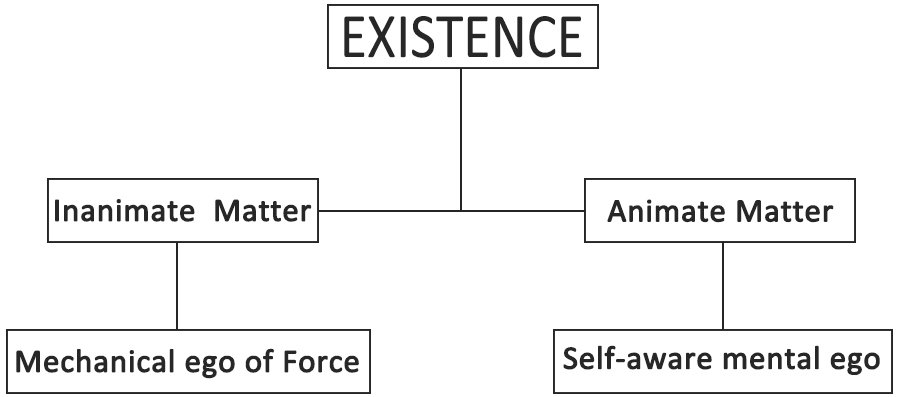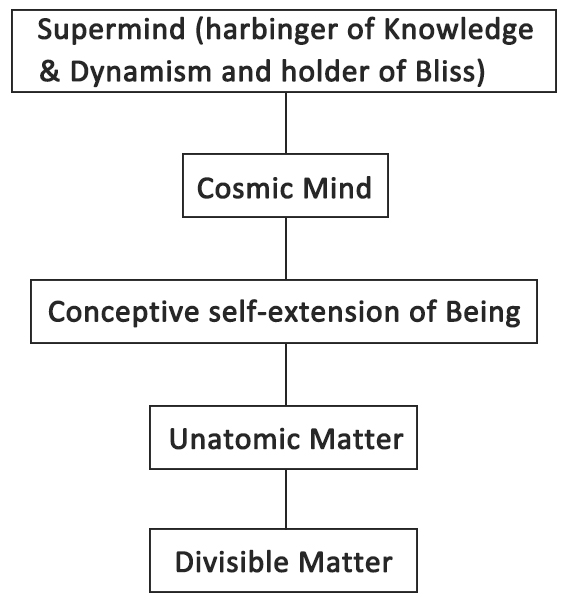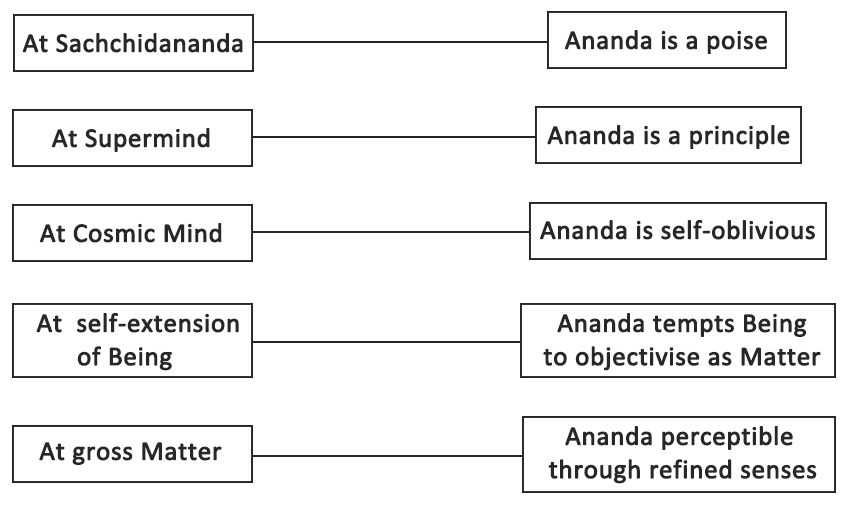|
The fiction of uniqueness needs to be maintained even when there is an opposite movement of aggregation for in a world of infinite aggregates, each aggregate is also unique. (Perhaps that is why the discord between the individual and the collectivity and the discord between collectivities has not been properly solved and human unity still remains a chimera.
Table I
Maintenance of Uniqueness

An "extreme fragmentation of the Infinite" in the form of divisible Matter was needed as a "starting-point or basis" of creation. (Ibid) Was this world of divisible Matter hanging in an universal vacuum or supported by an intangible Ether that is not materially detectable?
It has now been demonstrated by scientists that subatomic particles like leptons and quarks cannot be subdivided any further because they lapse into formlessness. It seems that they sink into some ethereal infinite. This phenomenon gives rise to five significant perspectives:
(a) What we call creation which at the base is formed by aggregations of atomic units is unstable and yet permits repetitive reconstitutions "in the eternal flux of force" (Ibid, pg.254) so that the phenomenon can be maintained.
(b) The creation, albeit the world of atomically divisible Matter is supported by an "Unatomic extension of substance" which is not an aggregation of atoms but "pure existence, pure substance" or in other words is "Being or Brahman in its self-creative extension". (Ibid)
(c) This phenomenon of an unatomic, pure substance supporting the atomic disaggregation and aggregation that constitutes the flux of Matter is determined not by a function initiated at the level of the dividing Mind (though Mind can be aware of the phenomenon). It is caused by "a knowledge of Supermind and a principle of its dynamism". (Ibid) Subsequently, under the influence of the Supermind, the Cosmic Mind and Life work out the material universe as "subject or object of consciousness". (Ibid)
(d) There must be a factor that motivates the appearance of gross Matter from the unatomic self-extension of Brahman. This factor is the delight of Being or Sachchidananda which like an object of consciousness teases the Being to emerge from the status of a "hidden godhead" to manifest as the objective material universe. (Ibid)
(e) There must be a synaptic junction through which the Ananda hidden in unatomic Matter becomes perceptible at the level of gross Matter. This synaptic phenomenon constitutes our sense. That is why there can be a gradation of senses, spanning from the gross to the subtle senses and culminating in the Supramental Sense.
Table II
Flow of Matter

Table III
Status of Ananda

Date of Update:
24-Jan-20
- By Dr. Soumitra Basu
|

